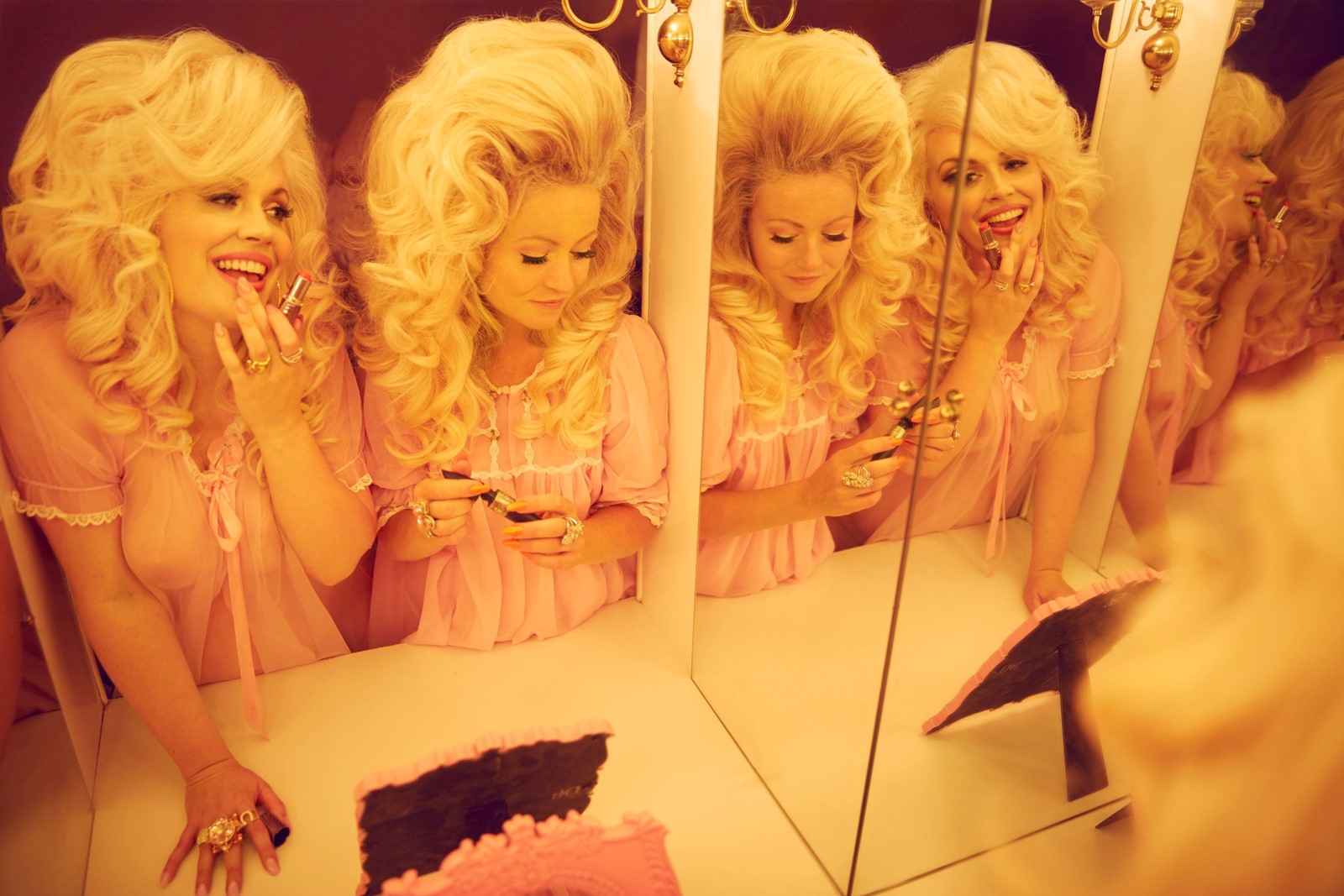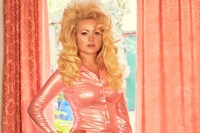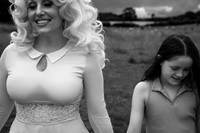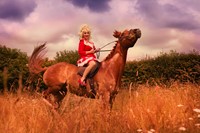Blonde hair is a potent cultural signifier, capable of embodying many contradictions and harmful, stereotypical binaries relating to class, race, sexuality, and morality. Across all realms of art, cinema, and literature, from the innocent ingénue to the promiscuous seductress, blondes – be they bleached or natural – offer a richly suggestive visual lexicon of privilege, poverty, power, frailty, artifice and naivety, supported by an archaic ideological architecture that casts women as either Madonna or whore.
Growing up as a blonde, London-based photographer Alice Hawkins endured more than one painful encounter with the limiting belief of other people who should’ve known better. Alongside memories of being woefully underestimated by her teachers because of her appearance, Hawkins tells AnOther, “I remember getting all dressed up for my first teenage night out on the town and my dad exclaimed I looked ‘like a tart in season’ which, even if not intended to, resulted in feelings of shame about embracing my femininity and sexuality.”
In opposition to these disempowering experiences, the teenager was drawn to “glamorous blonde women” on television who both embodied and defied the stereotypes she herself had felt subjugated by. “Women such as Pamela Anderson, Anna Nicole Smith and Bet Lynch weren’t ashamed of their sexuality or femininity, and brazenly portrayed quite the opposite,” she explains. “But when I first witnessed Dolly Parton’s performance on a stage in London over 20 years ago, I’d never seen or felt anything like it. I left spellbound and I knew I had found my idol. Her persona and presence gave clarity to the notion that you can be radiant, sexy, blonde, and almighty at the same time.”
More than two decades since she first became “bedazzled” by the icon, Hawkins’ latest book pays tribute to Parton while exploring vital components of her alluring persona, like class, sexuality, representation, gender, fandom and the American dream. Shot over a period of ten years, Dear Dolly (published by Baron) is a love letter to America’s country and western sweetheart. The photo book sees the photographer appropriating imagery of Parton in a series of portraits of herself, friends, family and fans from around the world. Using prosthetics, props, make-up and costumes to recreate the star’s distinctive silhouette and style, Hawkins’ photographs honour and cherish the kitsch that’s such an inescapable component of Parton’s image, without descending into irony.
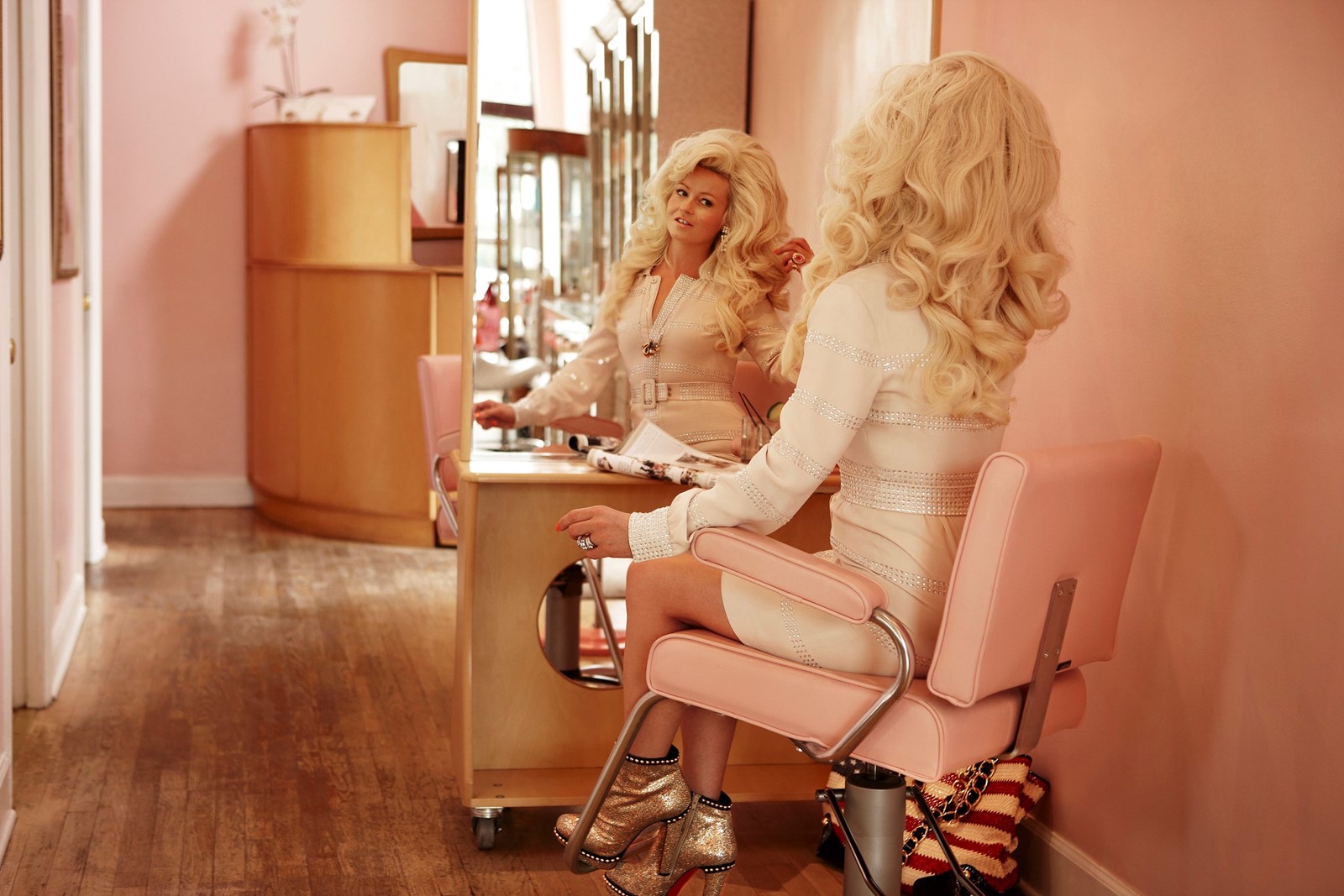
Below, AnOther spoke with Hawkins about enacting her own Dolly Parton-inspired fantasies, the enduring appeal of the country and western superstar, and Parton’s reaction to her portraits.
Emily Dinsdale: Could you describe why Dolly Parton captured your imagination?
Alice Hawkins: I find her unabashed portrayal of hyper-femininity liberating, powerful and inspiring. Her appearance bedazzles and demands my attention. As a girl who grew up in the countryside and moved to the big smoke with my own ‘cup of ambition’, Dolly’s music feels relatable and touches me in a profound manner. I’m sensitive and sentimental and find people from all walks of life and their personal stories fascinating. I love country music for its strong sense of narrative as much as its dazzling rhinestones. I think many people need someone or something to believe in that’s bigger than themselves, and Dolly Parton is that to me because she symbolises [that] you can be whoever you choose to be with pride.
ED: Could you elaborate on the idea of using photography as a means of embracing your own fantasies?
AH: I want to make work that matters personally, that feels authentic in the sense that it explores and honours my own tastes and desires. My subjects are individuals who I find extraordinary and feel genuine admiration towards – people who I have dreams of being as brave and audacious as myself. I use the role of photography to tell something of their story. It’s a collaboration but naturally, in directing many elements myself, ultimately I’m portraying my own fantasies.
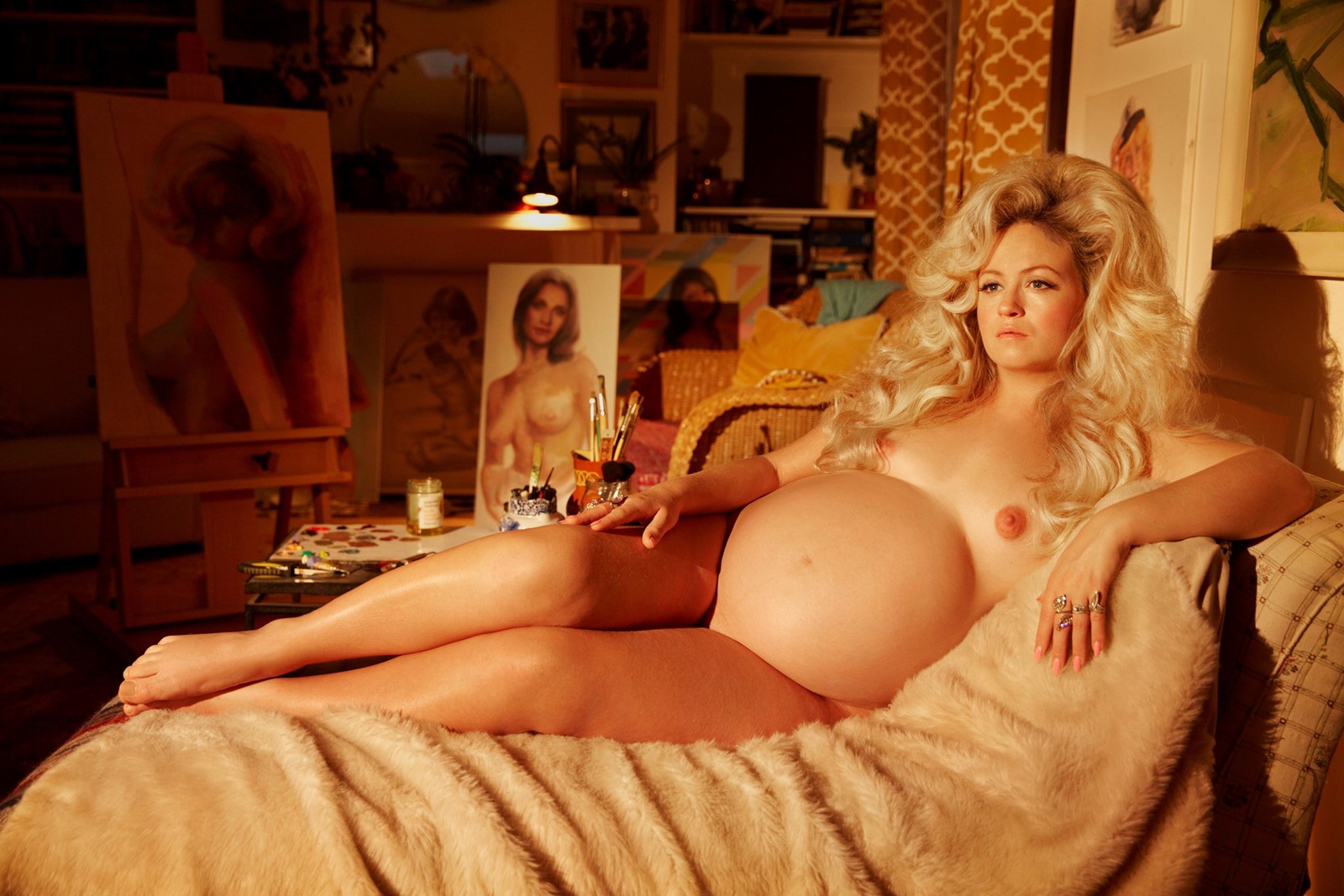
ED: Could you talk us through some of the contradictions Dolly embodies?
AH: Dolly is a true individualist and is actually made up of many layers. A prolific business woman with a god-gifted talent for songwriting and a voice of an angel, Dolly is both town and country; sex symbol, yet also Aunt Dolly. Despite climbing from rags to riches and achieving extraordinary heights of stardom, Dolly has never forgotten who she is and where she came from. She remains humble, grounded, and at 77 years old, she defies notions of ageism by remaining full of big dreams.
Her audience does not represent a singular group. It’s multi-cultural and multi-geographical and spans all sectors of society and class. Dolly seems to create an apolitical space where people who are different can live in harmony.
The contradiction I find most alluring about Dolly is she is both artificial and authentic. She presents an image as a hyper-feminine ‘dumb blonde’ but is at the same time unpretentious, real, clever, and full of wisdom. Dolly was warned at the start that she wouldn’t be taken seriously as a songwriter because of her image, yet she continued to do it her way. This campy image, as well as parodying and critiquing standards of class, gender and sexuality, also serves to communicate Parton’s point of not judging her by her ‘cover’.
“I think many people need someone or something to believe in that’s bigger than themselves, and Dolly Parton is that to me because she symbolises [that] you can be whoever you choose to be with pride” – Alice Hawkins
ED: What are your enduring memories of the shoots?
AH: Seven years ago, while pregnant with twins, I felt my identity was completely out of my control, and that doing a Dolly project was a matter of urgency. I needed to feel something of myself for a minute, and I also thought, perhaps this would be my last ever chance to do anything as self-indulgent again. I waited until I was humongous and felt the least myself and most terrified. I knew I had to be nude, laid bare for the first time, but I’d got to a point where I felt comfortable enough to do it. I didn’t care about judgement, and I felt proud.
Also, Kelly’s impersonation of Dolly Parton is exceptional, at times I felt like I was actually photographing the real Dolly. Not only does Kelly intricately perfect Dolly’s appearance, she also sings and speaks like Dolly. I was in awe the entire weekend I stayed with her and her family, I could barely sleep. I remember while filming Kelly (as Dolly) in her local village pub, a man walked in and completely believed it was the actual real Dolly Parton sitting there having a gin and tonic. Kelly kept in character, no one could bear to burst his bubble, he was amazed and so polite. It was obviously such a big moment for him.
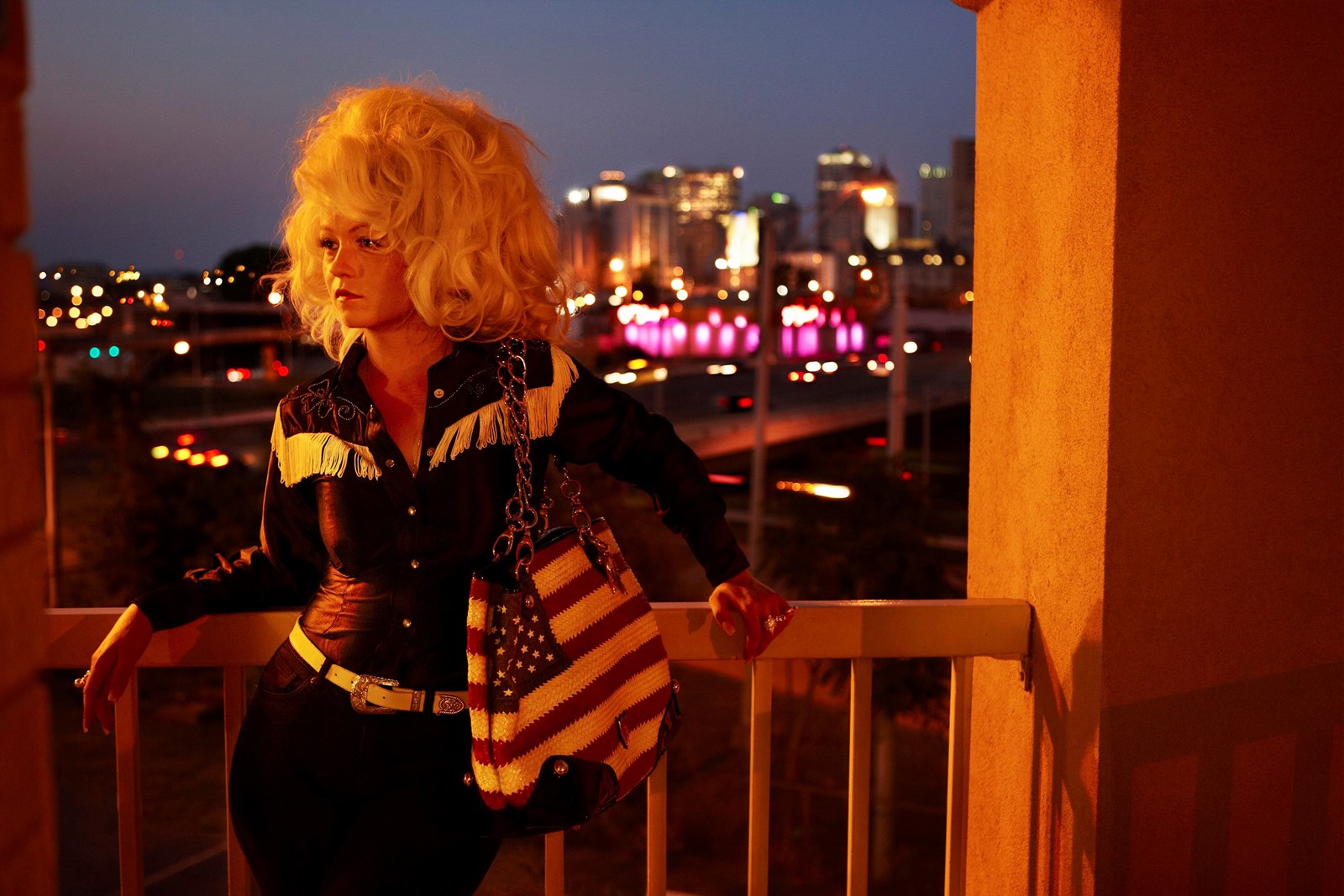
ED: Do you know if Dolly has seen the book? Have you had any feedback?
AH: No, Dolly hasn’t seen it yet although she has seen some of the work … not long after I started this project my friend Paloma invited me to meet Dolly with her at Dolly’s show. The meeting was over in about three minutes, but each second meant everything to me. I was nervous and could hardly get a word out, but before she left to get back on the stage, Paloma took a photograph of her and me and it’s the first photograph in the book.
After Dolly left and went back on stage, I remembered the prints of the work I had made so I nervously gave them to her tour bus driver, along with a handwritten note explaining my project. The next day her manager emailed me, thanking me for giving Dolly the pictures and said that he was very impressed and that I looked like a young, hot Dolly! I was amazed and relieved they didn’t think I was crazy. He even gave me a meet-and-greet Dolly pass for all her forthcoming shows and, over the years, I went to more shows and met Dolly each time. These experiences and his reaction definitely spurred me on to continue with my project.
Dear Dolly by Alice Hawkins is published by Baron and is out now. Dear Dolly’s publication coincides with an exhibition of the work at Have a Butchers gallery in London from 4-19 May 2023.
